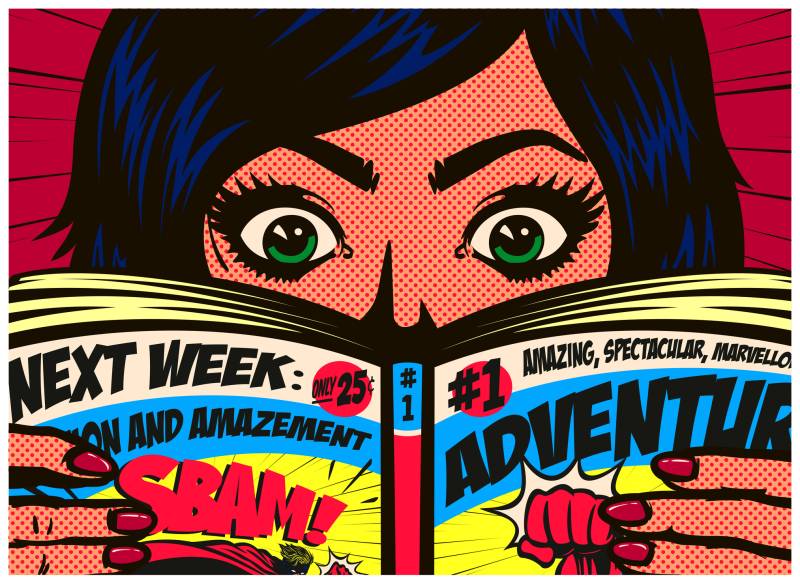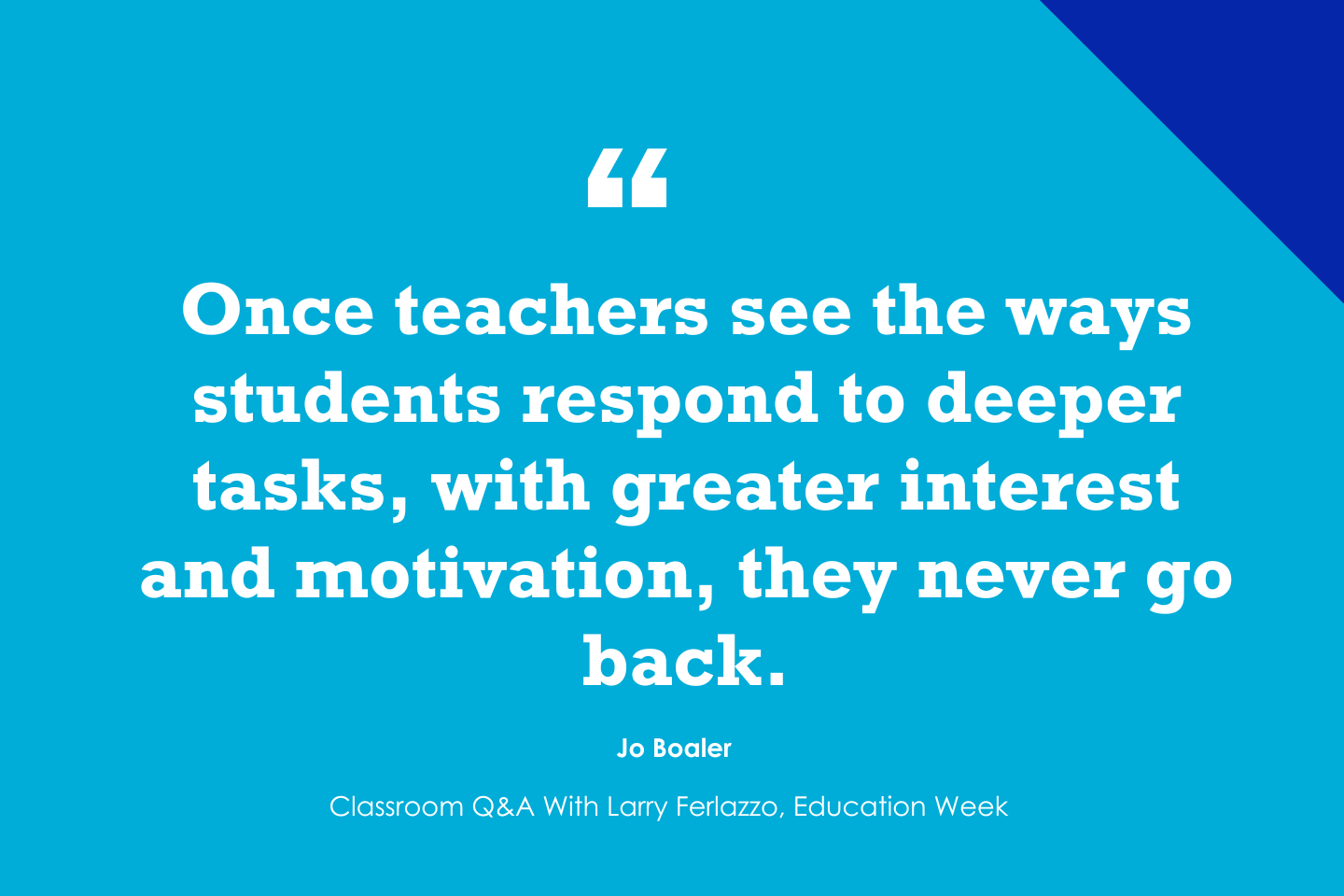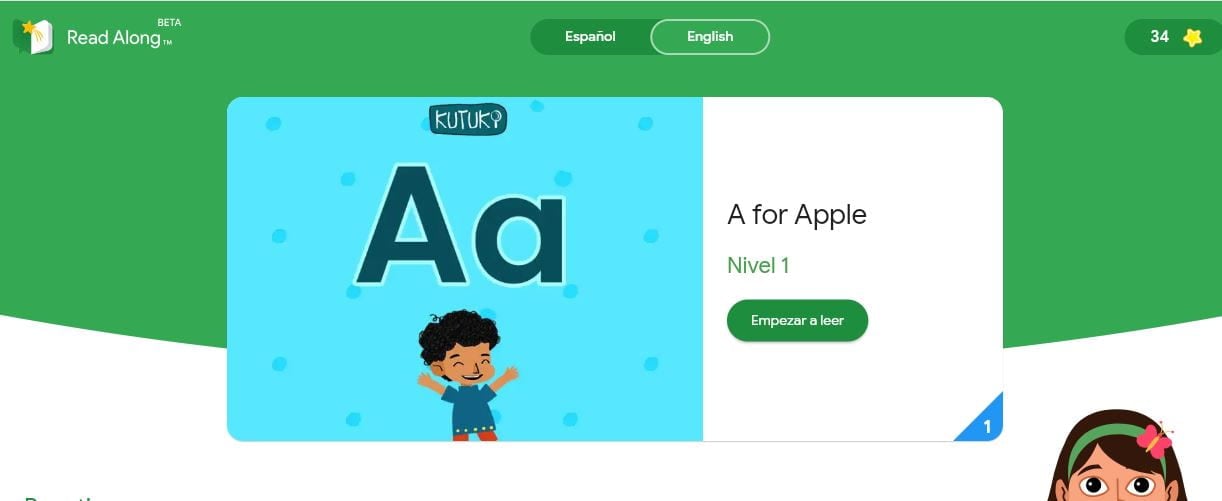POW! SMACK! BAM! The sounds of a classic comic book fight scene have not always been associated with academic opportunities, yet many teachers see students reaching for graphic novels and comic books more often than traditional books. Comic books and graphic novels fall under the umbrella of sequential art. It’s a medium of communication, not a genre, explained Stephane Manuel, founder of TrueFiktion, an educational company that uses comic books to teach history. “It’s the deliberate juxtaposition of images and text to convey meaning. … Audio, text and video are all communication mediums, and each has its own idiosyncrasies that make it great for learning.”
According to a 2023 survey by the School Library Journal, graphic novels have risen in popularity at over 90% of school libraries. However, the same survey reported that a majority of librarians experienced opposition to graphic novels from parents, teachers and others who didn’t consider them “real books.” Resistance often stems from misconceptions that they lack academic rigor, are too controversial, and do not build reading skills, said literary specialist Shawna Coppola at the 2024 EdCollab Gathering. When teachers dispel preconceived notions about comics and graphic novels, they can unlock these books’ potential as educational tools.
Graphic novel rigor
One common misconception is that graphic novels and comics are not academically rigorous. However, graphic novels can be used to teach key concepts in line with academic standards in various subjects. Manuel creates historical fiction comic books that cover such topics as Brown v. Board of Education, The Delano Grape Strike and the Zoot Suit Riots. In his curricula, teachers are encouraged to bring in primary and secondary sources to support students’ learning and understanding. “These comics provide a very rich opportunity to have thoughtful dialogue around a moment in history,” he said.
Tim Jones, a library media specialist in Kentucky, uses comic books and graphic novels to teach media literacy by inviting students to consider why the illustrator and author made certain decisions. He might ask students why they think the creator used a close-up of a character’s face instead of zooming out or what emotion the author or illustrator is trying to convey in a particular panel. Additionally, he asks students to look at ads or commercials and consider similar questions. Students are likely already thinking about these things in their head, Jones said. Discussions allow them to verbalize how they make meaning out of images.
While comic books and graphic novels may contain fewer words per page than the average chapter book, the authors are required to choose their words more carefully. “[They] reach for a higher-level vocabulary word that says in one word what the average person might take six or seven words to say,” said Jones. A study by the University of Oregon found that comic books average 53.5 rare words per thousand, while children’s books average 30.9, and adult books average 52.7.
Contested content
Historically, many comic books portrayed women in highly sexualized ways or included a lot of racism and bias, said Coppola. Those trends created a misconception that all graphic novels contain inappropriate content for students. However, there are many age-appropriate options available. “When I’m selecting graphic novels for a library collection, my focus is on supporting the curriculum of the school community and giving students the freedom to explore different perspectives,” said Jones.
Graphic novels have been banned or challenged in schools and libraries because they are deemed inappropriate or sexually explicit, particularly if a book includes LGBTQIA+ themes. Examples of targeted books include Gender Queer by Maia Kobabe, Maus by Art Spiegelman and New Kid by Jerry Craft. Coppola invited teachers to consider the meaning of “controversial” and whose lives and experiences their definition centers.
Comic book and graphic novel challenges have also focused on “diverse content” that includes stories that feature characters of color, like Betty by David Robertson and Persepolis by Marjane Satrapi. Every student, regardless of socioeconomic background, gender, or race, should be able to see themselves meaningfully represented, Manuel said.
Real reading skills
Some educators and parents believe that the images in graphic novels distract students from the text or that there is not enough text in graphic novels to build reading comprehension skills. In fact, it’s the opposite. Graphic novels and comics contain two types of text: one in the images and one in the words. “Readers must decode, comprehend and synthesize both of these kinds of text. That is a complex thing that you have to do,” said Coppola. “There is a lot of complexity in reading even a one-panel comic.” Integrating visual and textual elements can enhance comprehension and retention.
Comics and graphic novels are made up of panels. The break between panels is called a gutter, which Jones said represents a change in time or location. Reading graphic novels uses cognitive skills such as understanding visual cues and following non-linear narratives. While reading, students practice making inferences because they have to think about what is happening between panels. This process, called “closure,” involves perceiving the whole even though you only see pieces of something, said Manuel, referencing Scott McCloud’s book Understanding Comics.
Manuel said that making inferences encourages the readers to take part in the storytelling process. He suggests that teachers start lessons with a gallery walk where students examine comic book art with the text removed. Then students can use post-it notes to make predictions and observations about the images. Teachers can use the information from the post-it notes to shape their lessons.
Graphic novels can engage students of all levels, especially reluctant readers. One teacher shared with Manuel that using comics and graphic novels helped previously quiet students become more engaged. Normally, it was a struggle to get these students to talk or participate, but with comics, they eagerly led discussions with their own questions.
Three educators weighed in on how graphic novels and comics can boost reading skills and enhance critical thinking. MindShift










